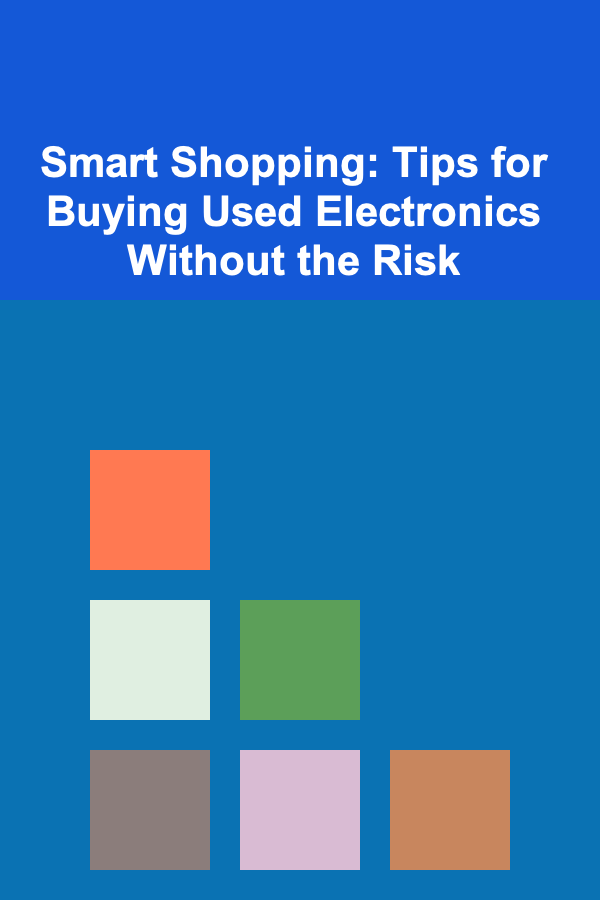
How to Use Cash Envelopes for Better Home Budgeting Control
ebook include PDF & Audio bundle (Micro Guide)
$12.99$10.99
Limited Time Offer! Order within the next:

In a world dominated by digital payments and credit cards, the traditional method of cash budgeting has become somewhat of a lost art. However, the cash envelope system remains one of the most effective tools for controlling household finances, promoting mindful spending, and achieving long-term financial goals. It is a system that forces you to be conscious of your expenditures, helps curb impulse buys, and ultimately empowers you to live within your means. This article will explore how to use cash envelopes for better home budgeting control, from understanding the fundamental principles to implementing and optimizing the system for maximum financial benefit.
The Basics of the Cash Envelope System
The cash envelope system is a budgeting method that involves allocating a set amount of cash for specific spending categories at the beginning of the month. This money is placed into designated envelopes that correspond to different areas of your budget, such as groceries, dining out, entertainment, and transportation. Once the cash in an envelope is gone, you can no longer spend in that category for the rest of the month, which encourages more thoughtful and restrained spending.
This system can be extremely powerful, as it sets clear boundaries for each category of spending. For many people, physically handing over cash for purchases instead of using a card makes them more aware of their spending habits. It also helps remove the temptation to overspend, making it a great way to curb unnecessary expenses.
Why Use the Cash Envelope System?
The advantages of using the cash envelope system for budgeting are numerous. First and foremost, it helps you gain a better understanding of where your money is going. When you're only allowed to spend cash from a limited set of envelopes, you are forced to track your expenditures in a way that is less abstract than the process of swiping a credit or debit card.
Here are a few reasons why you might consider using the cash envelope system for your home budgeting control:
- Visual Tracking of Spending: Cash envelopes make it much easier to visualize how much money you have left for each category. You can literally see the cash depleting as you make purchases, making it harder to ignore your budget.
- Limits Impulse Spending: When you have a fixed amount of cash to spend, you're less likely to make impulse purchases that exceed your budget. Once the cash is gone, you can't buy more unless you adjust your budget or make a hard decision about whether you really need the item.
- Avoiding Debt: Using cash reduces the temptation to carry a balance on credit cards. It's easy to overspend with a credit card and then fall into debt. Cash forces you to live within your current means, making it much harder to overextend yourself financially.
- Increased Financial Awareness: The envelope system encourages mindful spending. It forces you to be conscious of how much you're spending on discretionary items like entertainment or eating out, making it easier to cut back on unnecessary expenses and save more money.
- Goal-Oriented Approach: Cash envelopes can also be used for short-term savings goals. If you are working towards saving for a vacation or paying off a specific debt, you can allocate part of your income to a designated envelope, giving you a clear visual representation of your progress.
How to Implement the Cash Envelope System
Implementing the cash envelope system in your home budget can be a simple yet transformative process. However, for it to work effectively, you'll need to follow a few key steps to set it up properly. Here's a step-by-step guide on how to use cash envelopes for better budgeting control:
Step 1: Assess Your Monthly Income and Expenses
Before you can create a cash envelope system, you need to know how much money you have to work with each month. Review your monthly income, including salaries, side gigs, and any other sources of funds. Subtract any fixed costs---like rent or mortgage, utilities, insurance, and debt payments---that are non-negotiable.
Next, list your variable expenses. These are expenses that can change from month to month, such as groceries, transportation, entertainment, dining out, clothing, and other discretionary spending. The amount you have left after deducting fixed costs is your discretionary spending budget.
Step 2: Categorize Your Spending
Once you know how much money you have to spend, categorize your variable expenses into specific categories that make sense for your lifestyle. Some common categories for a cash envelope system include:
- Groceries: This is usually one of the largest categories for most families. Include all food-related expenses, including meals eaten at home.
- Transportation: This could include gas, public transportation, or any other commuting-related expenses.
- Dining Out/Takeout: If you enjoy eating out, set a specific amount of money aside for this category.
- Entertainment: Allocate a portion of your discretionary spending for activities such as movies, sports events, or hobbies.
- Clothing: Even if you don't buy clothes every month, it's still a good idea to allocate a small amount for clothing purchases throughout the year.
- Miscellaneous: This category is for unplanned expenses, like a gift for a birthday, repairs, or other occasional purchases.
The goal is to categorize all your variable expenses in a way that makes sense for your lifestyle, ensuring that every dollar has a designated purpose.
Step 3: Set Up Your Envelopes
Once you've categorized your spending, it's time to allocate cash to each envelope. You can start with physical envelopes or use an envelope system app that tracks your spending digitally. For each category, decide how much money you'll need for the month and place the corresponding amount into the envelope.
For example:
- If you have $300 allocated for groceries, put $300 in your "Groceries" envelope.
- If you have $100 for dining out, put $100 in your "Dining Out" envelope.
- If you plan to spend $50 on entertainment, place $50 in the "Entertainment" envelope.
The key is to only use cash from the envelopes for the designated category. This will help prevent overspending.
Step 4: Track Your Spending
As you go through the month, make sure to track every purchase you make. Each time you buy something from a category, deduct the amount from the cash in the envelope. If you're using physical cash envelopes, it's easy to keep track because you'll physically see how much money is left.
If the envelope is empty, it means you've exhausted that category's budget for the month. This is when you have to make a decision: will you adjust the rest of your spending in other areas, or will you make do without spending any more in that category for the rest of the month?
Step 5: Adjust for Next Month
At the end of the month, review how well the system worked for you. Did you overspend in any category? Were there areas where you could have saved more? Use this reflection to adjust your cash envelope amounts for the following month. If you consistently run out of money in a specific category, it might be time to allocate more cash to that envelope. Conversely, if you're consistently under budget, you might be able to reduce your allocations and allocate more money toward savings.
Step 6: Experiment with Digital Envelopes (Optional)
If carrying cash isn't ideal for you, consider experimenting with digital versions of the envelope system. There are numerous apps designed for cash envelope budgeting, such as GoodBudget , Mvelopes , and You Need a Budget (YNAB). These apps work by allowing you to set up virtual envelopes and track your spending without handling physical cash.
Digital systems can provide the same benefits as the traditional envelope method but with the added convenience of electronic transactions. However, it's still important to stick to your allocated amounts for each category and avoid transferring money between envelopes once they're emptied.
Tips for Success with the Cash Envelope System
To ensure the success of your cash envelope budgeting system, here are a few additional tips:
- Be Realistic: It's important to set realistic budget amounts for each category. Don't try to drastically cut back on expenses just to save money---this could lead to frustration and the abandonment of the system. Start with reasonable amounts and gradually adjust as you go.
- Use Cash for Small Purchases: Even if you don't use cash for all your purchases, try using cash for smaller expenses like coffee, snacks, or small impulse buys. This will help reinforce your awareness of spending.
- Don't Borrow from Other Envelopes: Once the money in a category's envelope is gone, don't borrow from another category. This will defeat the purpose of the system, which is to limit your spending to a fixed amount.
- Use Unspent Money for Savings: If you have leftover cash in any envelope at the end of the month, consider using it to build an emergency fund or make additional debt payments. This can be a rewarding way to make your budgeting efforts pay off even more.
- Track Expenses Regularly: Regularly track your spending, either by noting it down manually or using an app. This will help you stay accountable and allow you to quickly spot any discrepancies.
Conclusion
The cash envelope system is a powerful tool for anyone looking to gain better control over their home budgeting. By limiting your spending to specific categories and tracking it physically or digitally, you can become more mindful of your financial choices, reduce impulse spending, and ultimately work towards your financial goals. Whether you stick with traditional envelopes or explore digital alternatives, the cash envelope system offers a straightforward and effective method for managing your finances. By following these steps and tips, you'll be well on your way to mastering your budget and achieving financial stability.
Reading More From Our Other Websites
- [Home Renovating 101] How to Plan a Kitchen Island for a More Functional Space
- [Metal Stamping Tip 101] Top 7 Innovations Driving the Future of Metal Stamping Manufacturers
- [Personal Care Tips 101] How to Choose a Shampoo for a Healthy Scalp and Hair Growth
- [Personal Investment 101] How to Invest in Dividend Stocks for Passive Income
- [Home Security 101] How to Maximize the Effectiveness of Security Cameras with Professional Monitoring
- [Metal Stamping Tip 101] Best Strategies for Scaling Up Custom Metal Stamping from Prototype to Production
- [Beachcombing Tip 101] From Sea Glass to Fossils: The Most Fascinating Beachcombing Discoveries
- [Weaving Tip 101] From Yarn to Art: Step‑by‑Step Floor Loom Projects for Every Skill Level
- [Home Staging 101] How to Stage a Home with Bold Colors Without Overwhelming Buyers
- [Home Rental Property 101] How to Stage a Rental Property for Maximum Appeal (and Higher Rent) in the Digital Age

How to Perform Seasonal Home Maintenance Checks
Read More
How to Use Tags and Keywords to Organize Digital Photos
Read More
Smart Shopping: Tips for Buying Used Electronics Without the Risk
Read More
How To Evaluate a Movie's Pacing and Editing
Read More
How to Build a Retirement Planning Checklist for Early Retirement
Read More
How to Plan a Sensory Garden for Relaxation
Read MoreOther Products

How to Perform Seasonal Home Maintenance Checks
Read More
How to Use Tags and Keywords to Organize Digital Photos
Read More
Smart Shopping: Tips for Buying Used Electronics Without the Risk
Read More
How To Evaluate a Movie's Pacing and Editing
Read More
How to Build a Retirement Planning Checklist for Early Retirement
Read More